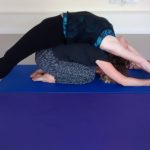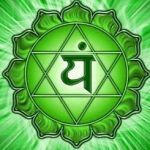Hi Everybody! I hope you all enjoyed your Christmas and that it gave you good memories. I wish you all love and peace, good health and contentment for this coming year.
Our first week back will, as always, include an intention for our practice. I know that some of you come with your own intention for your practice and that others like to share the group intention for that week. This term, I shall be encouraging you to come with your own intention for your practice.
It may be that you end up having the same intention for the whole of the term, or it may be that you experiment with a different intention for each practice, that will be your choice. 
When we work with an intention for our practice it gives us a reason to step on to our mats. Instead of “just doing it”, we have a purpose and a resolve that deepens the practice. The experience becomes quantitative as well as qualitative in that we either consciously assess, or unconsciously contemplate, what it is that we want from our practice before we step on to our mat. Then, we have a way of measuring what we have achieved from our practice when we step off of our mat.
An intention for your yoga practice can be –
Physical, examples of which might be: “I want to ease my back pain” or “I want to feel physically stronger”;
Psychological: “I want to feel less anxious/stressed/tense…” or “I want to feel more at ease with myself/experience mental equilibrium/feel more empowered …”;
Emotional: “I want to release fear/anger/hurt …” or “I want to experience more contentment/confidence/peace …”
Energetic: “I want more energy” or “I want to become more aware of my energetic self”.
Spiritual: “I want to understand my spiritual purpose” or “I want to deepen my compassionate/empathetic/loving Self.”
What ever your intention is, it will give you more purpose for your practice, it will strengthen your resolve and your desire to practice, and it will encourage you to develop more insight into what your yoga practice can do for you, both on and off your mat.




 Next week, the focus for our practice will be on healing and balancing the heart chakra – Anahata, meaning unhurt, unstruck, and unbeaten – which rests in the centre of the chest. This chakra is considered to be the centre of the chakra system and the gateway between the three lower physical chakras and the three higher spiritual chakras. It is the seat of emotional consciousness and it relates to the element of air which is all around us, and in us within our breath.
Next week, the focus for our practice will be on healing and balancing the heart chakra – Anahata, meaning unhurt, unstruck, and unbeaten – which rests in the centre of the chest. This chakra is considered to be the centre of the chakra system and the gateway between the three lower physical chakras and the three higher spiritual chakras. It is the seat of emotional consciousness and it relates to the element of air which is all around us, and in us within our breath.